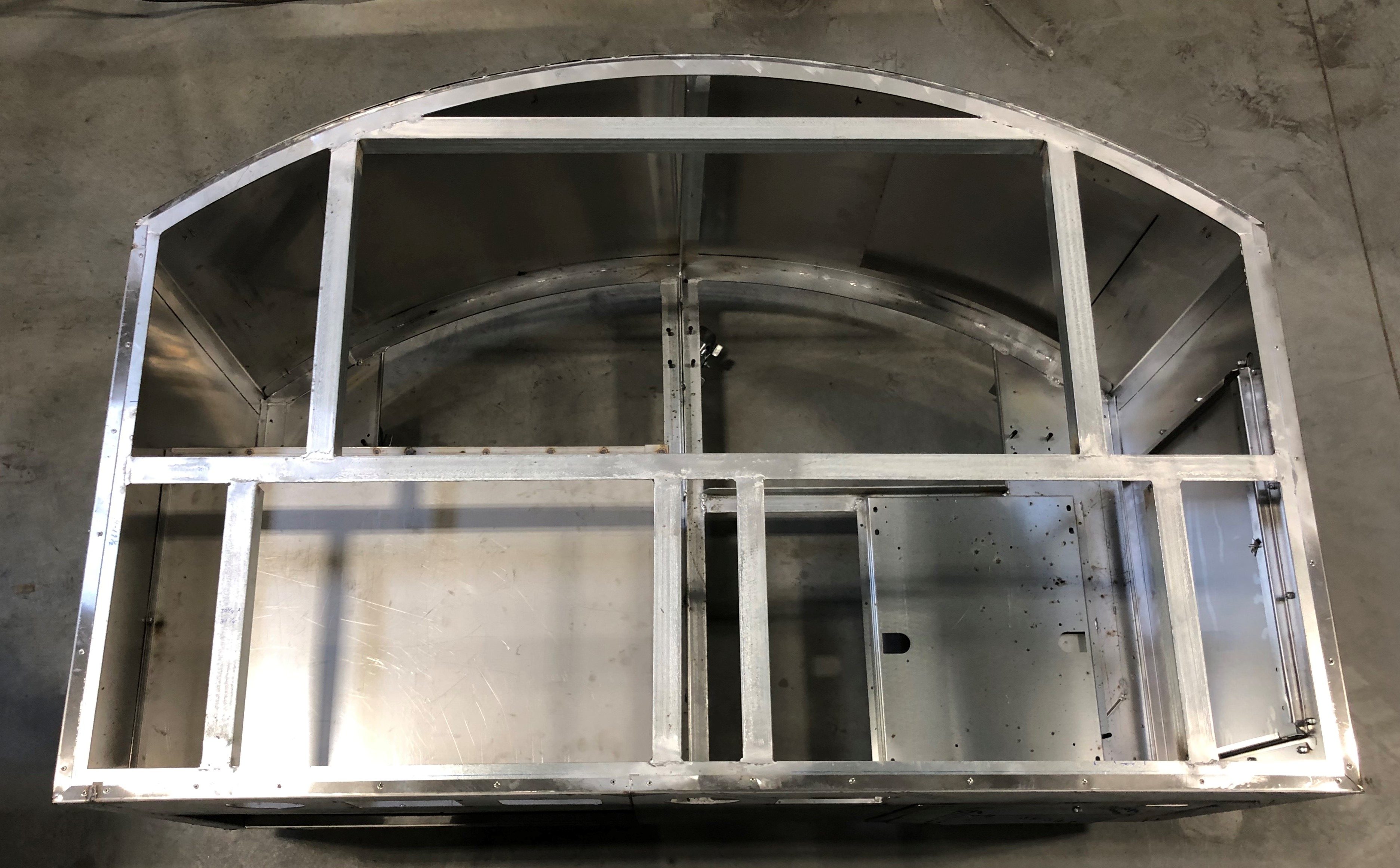
Specifying serving cabinet materials and builds can often be tough for buyers. With two main construction options available, millwork and steel frame, buyers may consider this a classic dilemma of choosing cost over durability — or vice versa. However, there is more to consider when deciding between these two construction types.
Millwork
A millwork serving counter has its share of benefits. With the variety of materials that can be used in this construction type (MDF, particle board, plywood, solid wood, plastic laminate or tile), these cabinets make for an inexpensive but highly customizable option. Whether buyers want cabinets with a curved design or very specific angles and dimensions, a millwork construction can deliver precise results. With the use of tools such as CNC routers, horizontal panel saws and edge banders — along with simple construction materials such as glue, screws and nails — fabrication can also be completed within tight timeframes.
However, getting a very customized look at a lower cost has its share of concerns. The materials used in millwork cabinets typically result in compromised water resistance and a diminished durability. This makes maintenance and cleaning practices more difficult as consistent exposure to liquids and grease can result in swelling, chipping or cracks in the material. Even normal amounts of use can lead to sagging doors and hinges over time. Overall, the lack of durability results in a significantly shortened life span when compared to steel frame construction cabinets.
Steel frame
When considering a steel frame serving cabinet, the most widely known benefit is its durability. However, there isn’t a one-size-fits-all approach in terms of material options or even construction types. Build qualities and price can vary greatly depending on the materials and machinery used. LTI employs a laser cutter, shear, press brake, notching machine, welding and finishing machinery for constructing equipment, which is most commonly built with the following steel materials:
- 1½” X 1½” X 1/8” galvanized angle
- 5’ X 12’ 11-gauge galvanized steel
- 1 ½ X 1 ½ X 1/8” stainless steel angle
- 18-gauge exterior panels and shelves
- 1 5/8” 16-gauge tubular stainless steel
While a steel framework cabinet is more expensive, when considering the number of years of service they will provide over millwork construction, operators can be all but guaranteed a greater lifetime value. And with ability to remove and apply new millwork skins to give the serving counter any aesthetic they may chose, customers can have the best of both worlds.
The water resistance, durability and overall strength of steel construction means operators won’t have to worry as much about material breakdown that can occur with millwork equipment. With the hinges, doors and fittings fastened to a steel frame, operators can rely on a more secure installation that is not only able to better meet the needs of a commercial foodservice environment, but makes the construction both UL and NSF compliant. Operators will also appreciate the easy cleaning and maintenance of these cabinets.
Durability
FCSI Associate Jennifer Rohn, a consultant with Foodlines in Lincoln, Nebraska, sums up the advantages of steel construction based on her experiences: “In 23 years of designing foodservice projects, I’ve had to replace a lot of old millwork, primarily because it’s susceptible to rot. We frequently see rotting wood in cabinet bases around floor sinks and around hot drop-in wells, which of course is a major health code violation, so I’ve never opted for millwork construction.”
“When you design with a stainless frame, you know you’re getting durability and longevity. We tell our clients that we can design their cabinetry or serving lines with wood, but then they should plan on replacing them in five to 10 years. With a stainless body, you know the serving lines will be there as long as you need them to be.”
Further details:
The prospect of saving money at the initial purchase with a millwork counter is alluring for many purchasers, but considering the advantages and lifespan of steel construction, the value is with steel. For more information regarding LTI’s wide variety of steel framed serving counters, visit www.lowtempind.com.
